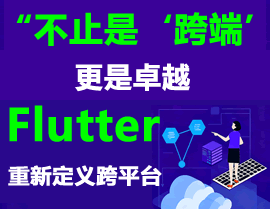uniapp app端如何获取设备时间
在uniapp开发APP时,如何获取设备的当前时间?我尝试使用new Date()获取的时间与服务端不一致,可能是时区问题。请问有没有准确获取设备本地时间的方法?需要兼容Android和iOS平台。
2 回复
在uniapp的app端,可以通过uni.getSystemInfoSync()获取系统信息,其中包含system字段显示系统版本和时间。如需精确时间,可使用JavaScript的Date对象:new Date()获取当前设备时间。
在 UniApp 中,App 端获取设备时间可以通过以下方法实现,主要使用 JavaScript 的 Date 对象或 UniApp 的 API。以下是具体步骤和代码示例:
方法一:使用 JavaScript 的 Date 对象(推荐)
这是最简单的方式,直接获取设备的本地时间。
// 获取当前设备时间
let deviceTime = new Date();
// 格式化时间(可选)
let year = deviceTime.getFullYear();
let month = deviceTime.getMonth() + 1; // 月份从0开始,需加1
let day = deviceTime.getDate();
let hours = deviceTime.getHours();
let minutes = deviceTime.getMinutes();
let seconds = deviceTime.getSeconds();
// 输出格式化后的时间字符串
let formattedTime = `${year}-${month}-${day} ${hours}:${minutes}:${seconds}`;
console.log('设备时间:', formattedTime);
方法二:使用 UniApp 的 API(如需要更多设备信息)
如果需要获取设备时区或其他信息,可以使用 uni.getSystemInfo。
uni.getSystemInfo({
success: (res) => {
console.log('设备时区:', res.timezone); // 获取时区信息
let currentTime = new Date(); // 结合 Date 对象获取时间
console.log('当前时间:', currentTime);
}
});
注意事项:
- 时区问题:
Date对象获取的是设备本地时间,如果应用需要统一时区(如 UTC),需手动转换。 - 网络时间:如果需要精确的网络时间,可能需要调用后端接口获取服务器时间。
- 性能:
Date对象轻量高效,适用于大多数场景。
完整示例代码
在 UniApp 的 Vue 页面中,可以这样使用:
export default {
data() {
return {
timeString: ''
};
},
onLoad() {
this.getDeviceTime();
},
methods: {
getDeviceTime() {
let now = new Date();
this.timeString = now.toLocaleString(); // 转换为本地时间字符串
console.log('设备时间:', this.timeString);
}
}
};
以上方法简单可靠,适用于 UniApp 的 App 端。如有进一步需求(如定时更新),可使用 setInterval 实现实时显示。






